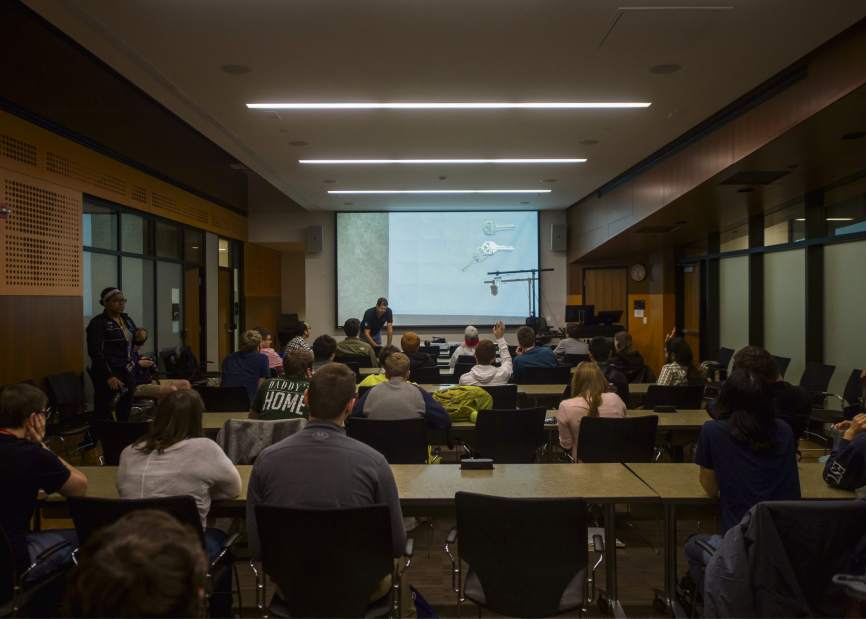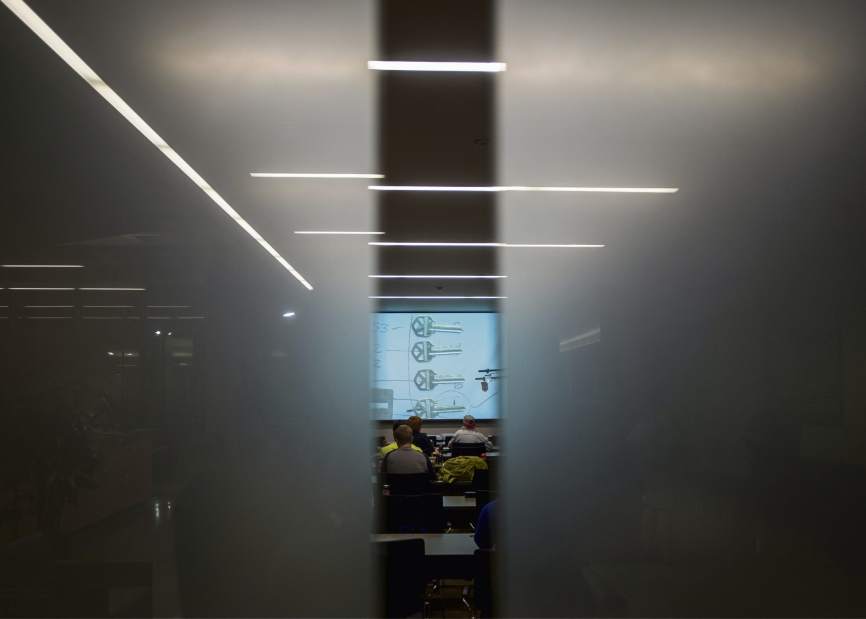Pitt teaching engineering students how to pick locks
The demonstration came with a stern warning.
World-renowned lock breakers Tobias Bluzmanis and Marc Tobias stood in front of a group of University of Pittsburgh students with lock picks, key-making machines and a host of other equipment that could break into nearly any lock.
“Don't get in trouble,” Bluzmanis warned before the demonstration started. “Don't go out with lock picks trying to pick any door. Avoid that.”
Pitt is teaching students how to pick locks — not to educate the next generation of safe crackers and burglary artists, but to educate the next generation of lock designers and physical security engineers.
Tobias and Bluzmanis, founders of Investigative Law Offices Inc. in South Dakota, started the Security Engineering Lab at Pitt's Swanson School of Engineering. The pair believe the lab is the first of its kind at a university.
Tobias said engineers are great at designing and building locks. The lab will teach those engineers how to take them apart with an eye for vulnerabilities and how to break into them. Tobias and Bluzmanis held a lecture and demonstration for Pitt students this week. The pair walked students through how basic locks work and let them try picking and bumping locks open.
“Everybody likes picking locks,” Tobias said. “It's all about secrets. Locks hide secrets. People want to know what's behind that door or what's in the safe.”
Tobias and Bluzmanis work with most of the major lock companies. They figure out how to pick or break a lock and then show the companies how they did it. They are white-hat hackers of the physical security world.
Students in the lab will tackle problems faced by the major lock companies.
“These aren't theoretical lab projects,” Tobias said. “These are real projects.”
The lab will examine vulnerabilities in locks using biometric and facial recognition, electric components, RFID and Bluetooth technology and other advanced systems. A huge concern is 3-D printing, Tobias said. Keys can be 3-D printed to open locks from as little as a photo of the front of the lock, Tobias said.
“Every lock is a challenge,” Tobias said. “I think it's better than chess.”
The pair are lock-picking rock stars. They are frequent guests at Defcon, the hacking conference in Las Vegas. The lock-picking village at Defcon, where hackers can try their hands at breaking into locks instead of networks and servers, is among the most popular exhibits, Tobias said.
Tobias has written books and works with law enforcement. The two have been featured in Wired and on morning television shows.
The pair figured how to break the high security locks used at the Pentagon and White House in less than a minute using a screwdriver and wire shim.
“Lock companies spend millions developing a lock,” Tobias said. “And we can break into it in 30 seconds.”
Aaron Aupperlee is a Tribune-Review staff writer. Reach him at aaupperlee@tribweb.com, 412-336-8448 or via Twitter @tinynotebook.



